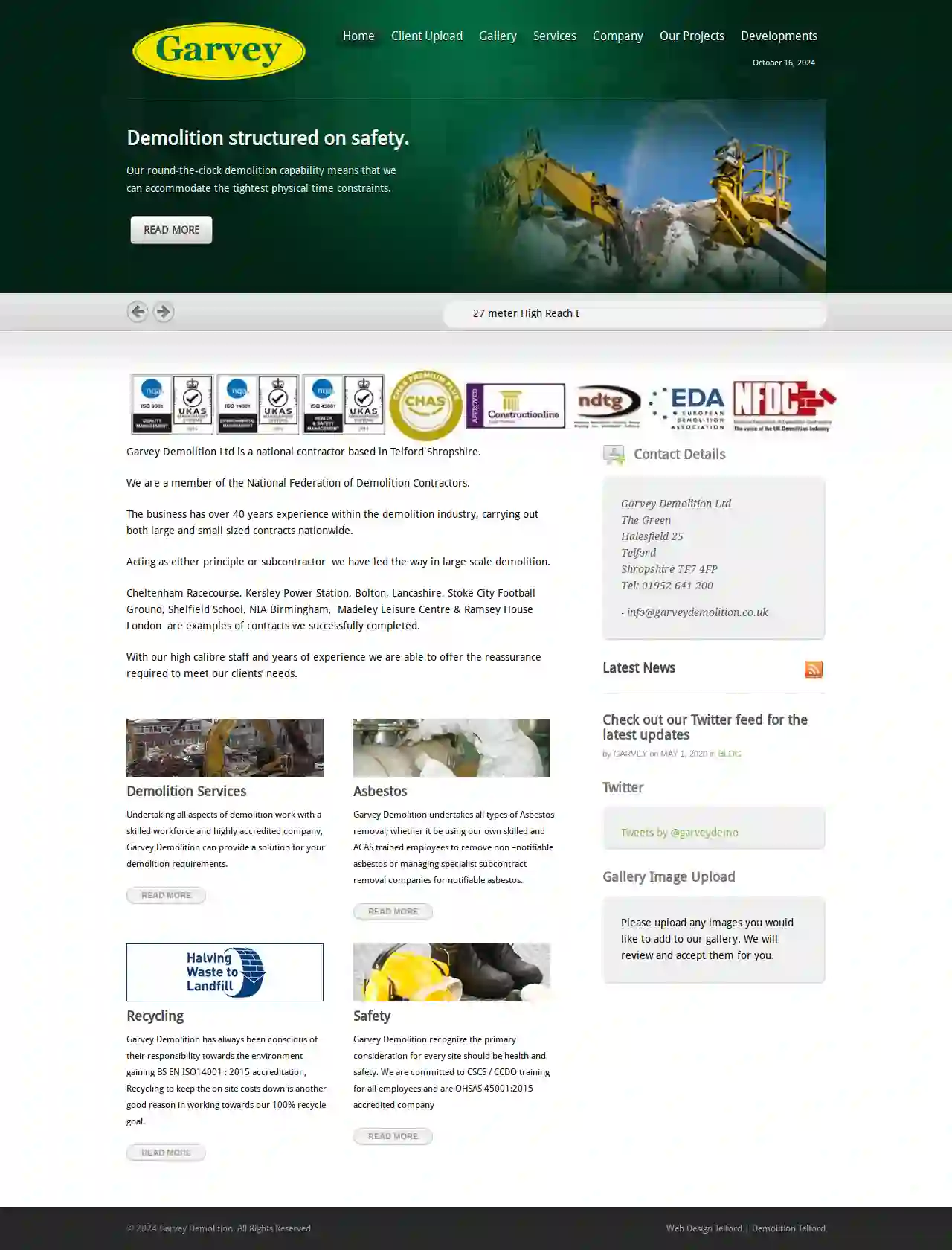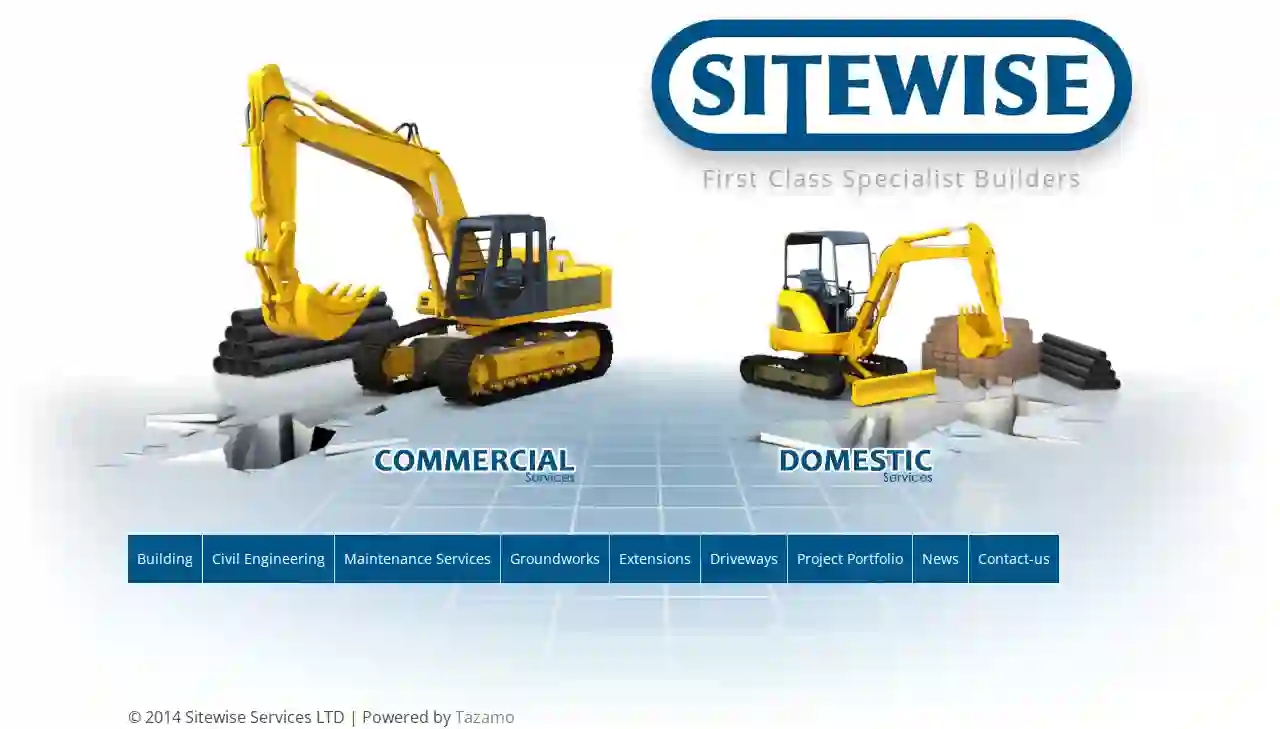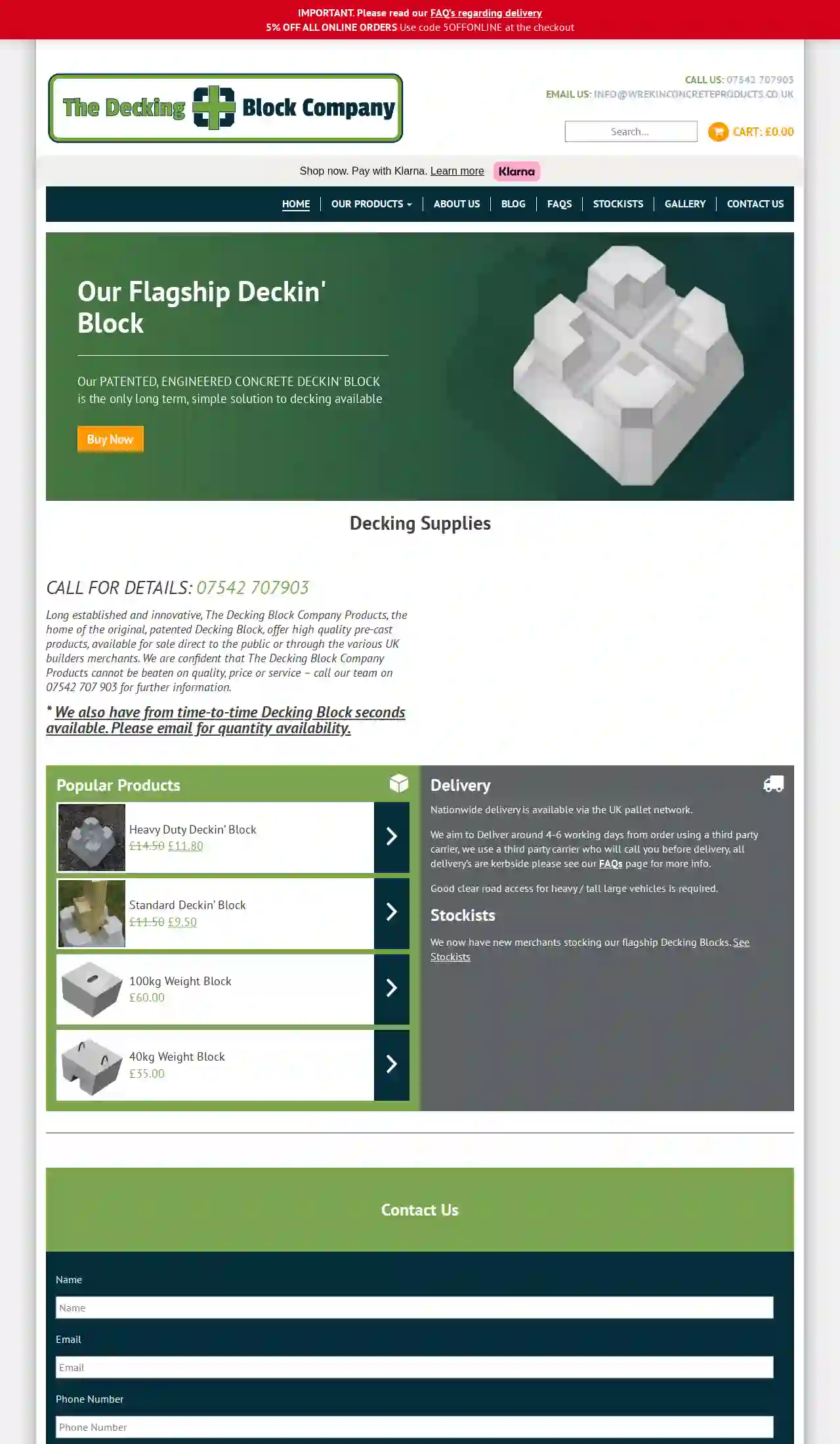Excavation Contractors Muxton
Find the best Excavation Contractors in Muxton
Receive 3 FREE Land Excavation quotes for your project today! Compare profiles, reviews, accreditations, portfolio, etc... and choose the best offer.

Wrekin Drain Services Ltd
4.828 reviewsTelford, GBAbout Wrekin Drain Services Wrekin Drain Services is a fully accredited professional drainage company that has been providing top-notch solutions since 2005. We are your local, fast-response drainage team, offering free quotes, competitive prices, and unbeatable service throughout Telford, Shrewsbury, Shropshire, and surrounding areas. Our team is DBS checked and holds all relevant certifications to perform all types of drainage work. We are committed to providing our clients with the highest quality service and are proud to have a long list of satisfied customers. Some of our key accounts include Telford & Wrekin Council, Shropshire Council, and Harper Adams University. We are dedicated to maintaining industry-leading accreditation, demonstrating our expertise and commitment to excellence. Our team is highly skilled and experienced in all aspects of drainage, from simple drain unblocking to complex sewer repairs. We use the latest technology and equipment to ensure that all our work is carried out to the highest standards. We are available 24 hours a day, 7 days a week for emergency callouts. We understand that drainage problems can be stressful and disruptive, so we aim to respond quickly and efficiently to minimize any inconvenience. Contact us today for a free quote or to discuss your drainage needs.
- Services
- Why Us?
- Testimonials
- Gallery
Get Quote
owens plant & machinery ltd
Ironbridge, Telford, GBWelcome to Owens Plant Machinery Limited We are a family run company which all started back in 1968 when Mr Henry Owen purchased his first digger and has steadily grown into the friendly, reliable company as it is now. We offer operated and non-operated self-drive plant hire. We cater for the general public as well as national companies. We are here to help and we endeavour to do our utmost to help.
- Services
- Why Us?
- Testimonials
- Gallery
Get Quote
Metro Rod (Shropshire)
4.822 reviewsAshwood Court, Tytherington Business Park, Macclesfield, Cheshire, SK10 2XF, GBMetro Rod Mid Wales & Shropshire Local, trusted drainage engineers available for all drain repair, drain unblocking, septic tank, and pump issues. Metro Rod-Mid Wales & Shropshire has you covered. Contact us today for a quote and free site-assessment. Services in Mid Wales & Shropshire We offer a wide range of drainage services to both domestic and commercial customers in Mid Wales & Shropshire. Our team of experienced engineers are available 24/7 to help with any drainage problem, no matter how big or small. Our Services Include: Drain care & repair Tanker services Pump maintenance Septic tanks and sewage treatment plants Why Choose Metro Rod Mid Wales & Shropshire? 24/7 emergency service Free site assessments Competitive prices Experienced and qualified engineers Excellent customer service
- Services
- Why Us?
- Gallery
Get Quote
Garvey Demolition
The Green, Halesfield 25, The Green Halesfield 25 Telford Shropshire, Telford, TF7 4FP, GBDemolition structured on safety. Garvey Demolition’s specialist skills and equipment mean that you can have confidence in our ability to complete even the most difficult demolition jobs. Demolition structured on safety. Our round-the-clock demolition capability means that we can accommodate the tightest physical time constraints. Demolition structured on safety. Garvey Demolition’s specialist skills and equipment mean that you can have confidence in our ability to complete even the most difficult demolition jobs. Garvey Demolition Ltd is a national contractor based in Telford Shropshire. We are a member of the National Federation of Demolition Contractors. The business has over 40 years experience within the demolition industry, carrying out both large and small sized contracts nationwide. Acting as either principle or subcontractor we have led the way in large scale demolition. Cheltenham Racecourse, Kersley Power Station, Bolton, Lancashire, Stoke City Football Ground, Shelfield School, NIA Birmingham, Madeley Leisure Centre & Ramsey House London are examples of contracts we successfully completed. With our high calibre staff and years of experience we are able to offer the reassurance required to meet our clients’ needs.
- Services
- Why Us?
- Accreditations
- Gallery
Get Quote
One Source Construction Services
54 reviews17 Foresters Close, Horsehay, Telford, Shropshire, TF4 3BW, GBAbout Us One Source construction Services are based in Telford, We cover works within the Midlands area. Our projects include both new construction, repairs/restorations across all areas of the industry. Occupied and fully operational job sites are never a problem. Also, we can plan, manage, and build multi-phase jobs. At One Source Construction Services we aim to be a one stop shop where we take all the stress of organising your project so you don`t have to. Working Together We offer an end-to-end client experience that includes; seamless communication, budgeting, staffing, on-site organisation, and solid, quality handy-work every time. Why Choose Us? We carry out all aspects of construction works projects, big or small. Call us today and bring our project management skills and extensive construction experience to your next project.
- Services
- Why Us?
- Gallery
Get Quote
Sitewise Services (Wellington) Ltd
51 reviews65 Sheriffhales, Shifnal, 65 Sheriffhales Shifnal Shropshire, TF11 8RQ, GBAbout Sitewise Services Sitewise Services is a reputable building and civil engineering company based in Shropshire, UK. We specialize in a wide range of services, including groundworks, extensions, driveways, and maintenance. Our team of experienced professionals is dedicated to delivering high-quality workmanship and exceeding client expectations. We pride ourselves on our commitment to customer satisfaction and our ability to complete projects on time and within budget.
- Services
- Why Us?
- Gallery
Get Quote
Best Driveways TKL Properties maintenance LTD
516 reviews123 Main Street, City, XX1 1XX, GBAbout Best Driveway Best Driveway is a leading provider of driveway services in the UK. We offer a wide range of services to meet your needs, from simple repairs to complete driveways. We are committed to providing our customers with the highest quality workmanship and customer service. We are fully insured and accredited, so you can rest assured that your project is in safe hands. We use only the best materials and techniques to ensure that your driveway is durable and long-lasting. We also offer a wide range of design options to suit your taste and budget. We are confident that you will be happy with the results. Contact us today for a free quote.
- Services
- Why Us?
- Accreditations
- Testimonials
Get Quote
Rosehill Contractors Ltd
511 reviewsMarket Drayton, Shropshire, UK., GBWelcome to Rosehill Contractors Limited We are a construction company based in Market Drayton, Shropshire, dedicated to delivering high-quality projects. With a team of experienced professionals, we provide comprehensive services to meet all your construction needs, big or small. New Builds Projects Got a plot of land and you're looking to build something bespoke? Our new build service offers a complete turn key solution. From design to construction, working with you to ensure your vision and dreams become a reality. We handle every aspect of the project with precision and care. Landscaping and Utilities Whether it's a residential or commercial site, our team has the expertise to get the job done quickly and efficiently. We focus on quality, house-keeping and repeat custom. Footings, drainage and earthworks If it's simply the footings and drainage work you need installing, we're always happy to help. Working alongside engineers via GPS points we can mark out and dig footings within an hour or so of being on site. Why choose us? Whether it's a complete new build package, a small extension or simply a new patio and some landscaping that you're after, you can put maximum trust in us to deliver top quality craftsmanship, on a realistic budget, in the tidiest, most efficent way. Contact us Get in touch with us today and let's discuss how we can bring your construction project and ideas to life. About us At Rosehill Contractors Limited, we take pride in our commitment to excellence, integrity, and customer
- Services
- Why Us?
- Gallery
Get Quote
Wrekin Concrete Products
511 reviewsTelford, GBLong established and innovative, The Decking Block Company Products, the home of the original, patented Decking Block, offer high quality pre-cast products, available for sale direct to the public or through the various UK builders merchants. We are confident that The Decking Block Company Products cannot be beaten on quality, price or service – call our team on 07542 707 903 for further information. * We also have from time-to-time Decking Block seconds available. Please email for quantity availability.
- Services
- Why Us?
- Gallery
Get Quote
Quin Plant Hire Ltd
58 reviews35 Waters Upton, Telford, TF1 1AA, GBWelcome to Quin Plant Hire At Quin Plant Hire, we specialize in operated hire of JCB 3CX backhoe loaders and operated mini digger hire. We cover Shropshire, Staffordshire, Cheshire, and the West Midlands, working in all sectors of industry, including domestic work, commercial, construction, landscaping, forestry, and site investigation. We are now the leading company in Shropshire providing backhoe loader hire, having built a great reputation for our services and offerings. Our Commitment to Quality Our drivers are fully insured and trained either via CPCS or NPORS, and we guarantee to provide a prompt, safe, professional, and reliable service.
- Services
- Why Us?
- Testimonials
- Gallery
Get Quote
Over 13,059+ Excavation Businesses onboarded
Our excavation companies operate in Muxton and beyond!
ExcavationHQ has curated and vetted Top Excavation Companies in and around Muxton. Find a top & trustworthy pro today.
Frequently Asked Questions About Excavation Contractors
- Mechanical Excavation: Utilizing heavy equipment like excavators, backhoes, bulldozers, and loaders, suitable for most projects.
- Hand Excavation: Using hand tools (shovels, picks) for smaller excavations or delicate work near utilities.
- Blasting: Employing explosives to break up rock or hard materials, typically for large-scale projects.
- Hydro Excavation: Using high-pressure water jets to loosen and remove soil, often used for locating utilities or delicate excavation.
- Vacuum Excavation: Employing a vacuum system to suck up excavated material, suitable for safe excavation near utilities or in confined spaces.
- Determine the Area: Measure the length and width of the area you want to fill. Multiply them to get the area in square feet (or meters).
- Determine the Depth: Measure the difference between the existing grade and the desired grade (how much you need to raise the ground). This is the depth of fill required.
- Calculate Volume: Multiply the area (step 1) by the depth (step 2) to get the volume in cubic feet (or meters).
- Account for Compaction: Fill dirt compacts when it settles, so add 10% to 25% to the calculated volume to account for compaction. The exact percentage depends on the type of fill material.
- Excavations Deeper Than a Certain Depth: This varies by jurisdiction, usually around 5 feet.
- Excavations Near Utilities: Digging near buried utilities (gas, water, electric) often requires permits and utility locates to prevent damage.
- Excavations Affecting Public Property: Projects impacting sidewalks, roads, or other public areas typically require permits.
- Excavations in Environmentally Sensitive Areas: Projects in wetlands, floodplains, or other sensitive areas might need special permits.
- Clearly Define the Scope: Outline the project's goals, including the excavation area, depth, grade, and intended use.
- Obtain Necessary Permits: Research and acquire any required permits from your local authorities.
- Mark Utility Lines: Contact your utility companies to locate and mark underground utilities to prevent damage.
- Communicate with Neighbors: Inform your neighbors about the project's timeline and potential noise or disruptions.
- Prepare the Site: Clear any obstacles, such as vegetation, furniture, or structures, from the excavation area.
- Discuss Safety Protocols: Review safety procedures with the contractor to ensure a safe work environment.
What are the different methods of excavation?
How do I calculate how much dirt I need for fill?
Do I need a permit for excavation?
What should I do before excavation starts?
What are the different methods of excavation?
- Mechanical Excavation: Utilizing heavy equipment like excavators, backhoes, bulldozers, and loaders, suitable for most projects.
- Hand Excavation: Using hand tools (shovels, picks) for smaller excavations or delicate work near utilities.
- Blasting: Employing explosives to break up rock or hard materials, typically for large-scale projects.
- Hydro Excavation: Using high-pressure water jets to loosen and remove soil, often used for locating utilities or delicate excavation.
- Vacuum Excavation: Employing a vacuum system to suck up excavated material, suitable for safe excavation near utilities or in confined spaces.
How do I calculate how much dirt I need for fill?
- Determine the Area: Measure the length and width of the area you want to fill. Multiply them to get the area in square feet (or meters).
- Determine the Depth: Measure the difference between the existing grade and the desired grade (how much you need to raise the ground). This is the depth of fill required.
- Calculate Volume: Multiply the area (step 1) by the depth (step 2) to get the volume in cubic feet (or meters).
- Account for Compaction: Fill dirt compacts when it settles, so add 10% to 25% to the calculated volume to account for compaction. The exact percentage depends on the type of fill material.
Do I need a permit for excavation?
- Excavations Deeper Than a Certain Depth: This varies by jurisdiction, usually around 5 feet.
- Excavations Near Utilities: Digging near buried utilities (gas, water, electric) often requires permits and utility locates to prevent damage.
- Excavations Affecting Public Property: Projects impacting sidewalks, roads, or other public areas typically require permits.
- Excavations in Environmentally Sensitive Areas: Projects in wetlands, floodplains, or other sensitive areas might need special permits.
What should I do before excavation starts?
- Clearly Define the Scope: Outline the project's goals, including the excavation area, depth, grade, and intended use.
- Obtain Necessary Permits: Research and acquire any required permits from your local authorities.
- Mark Utility Lines: Contact your utility companies to locate and mark underground utilities to prevent damage.
- Communicate with Neighbors: Inform your neighbors about the project's timeline and potential noise or disruptions.
- Prepare the Site: Clear any obstacles, such as vegetation, furniture, or structures, from the excavation area.
- Discuss Safety Protocols: Review safety procedures with the contractor to ensure a safe work environment.